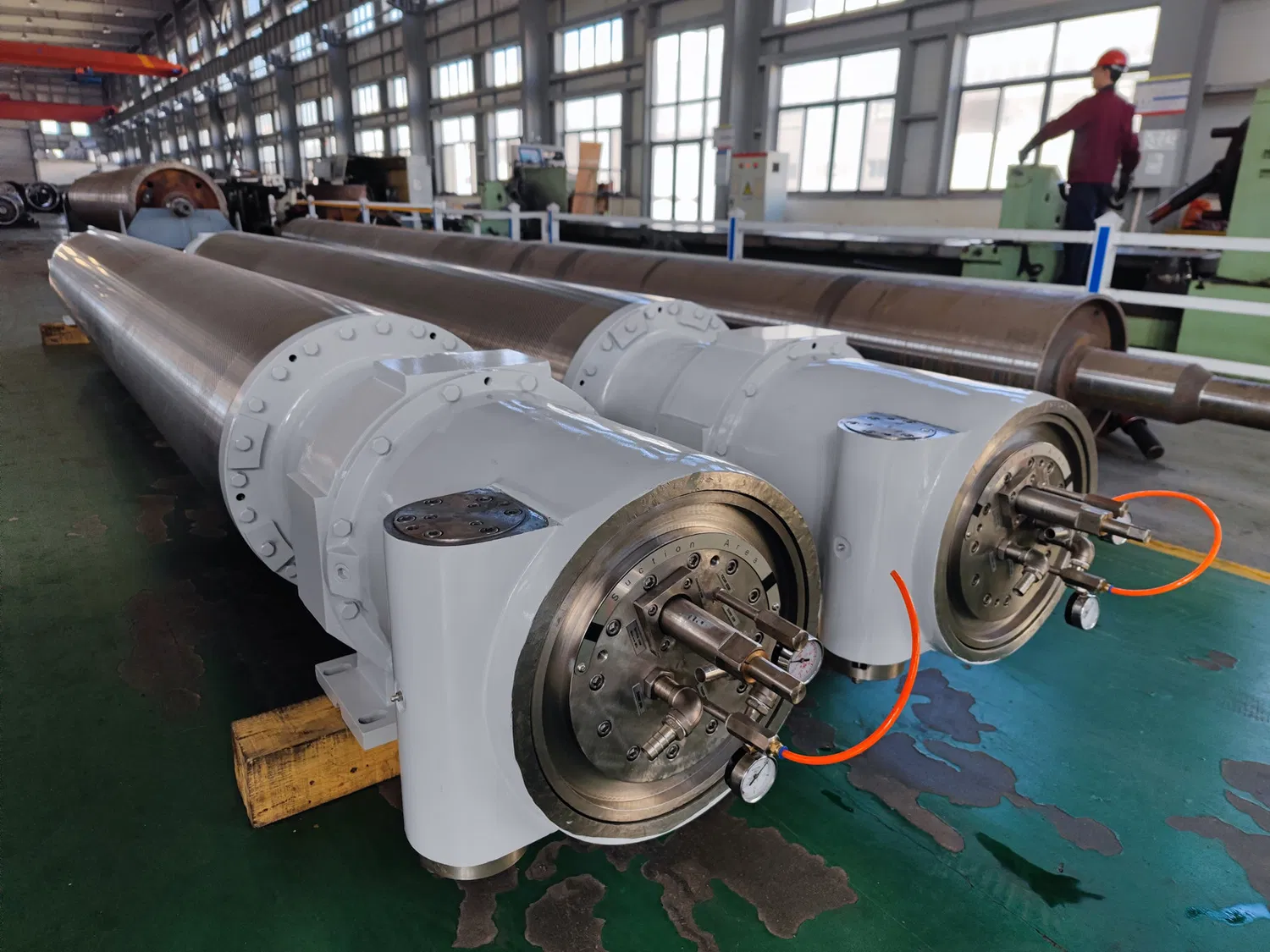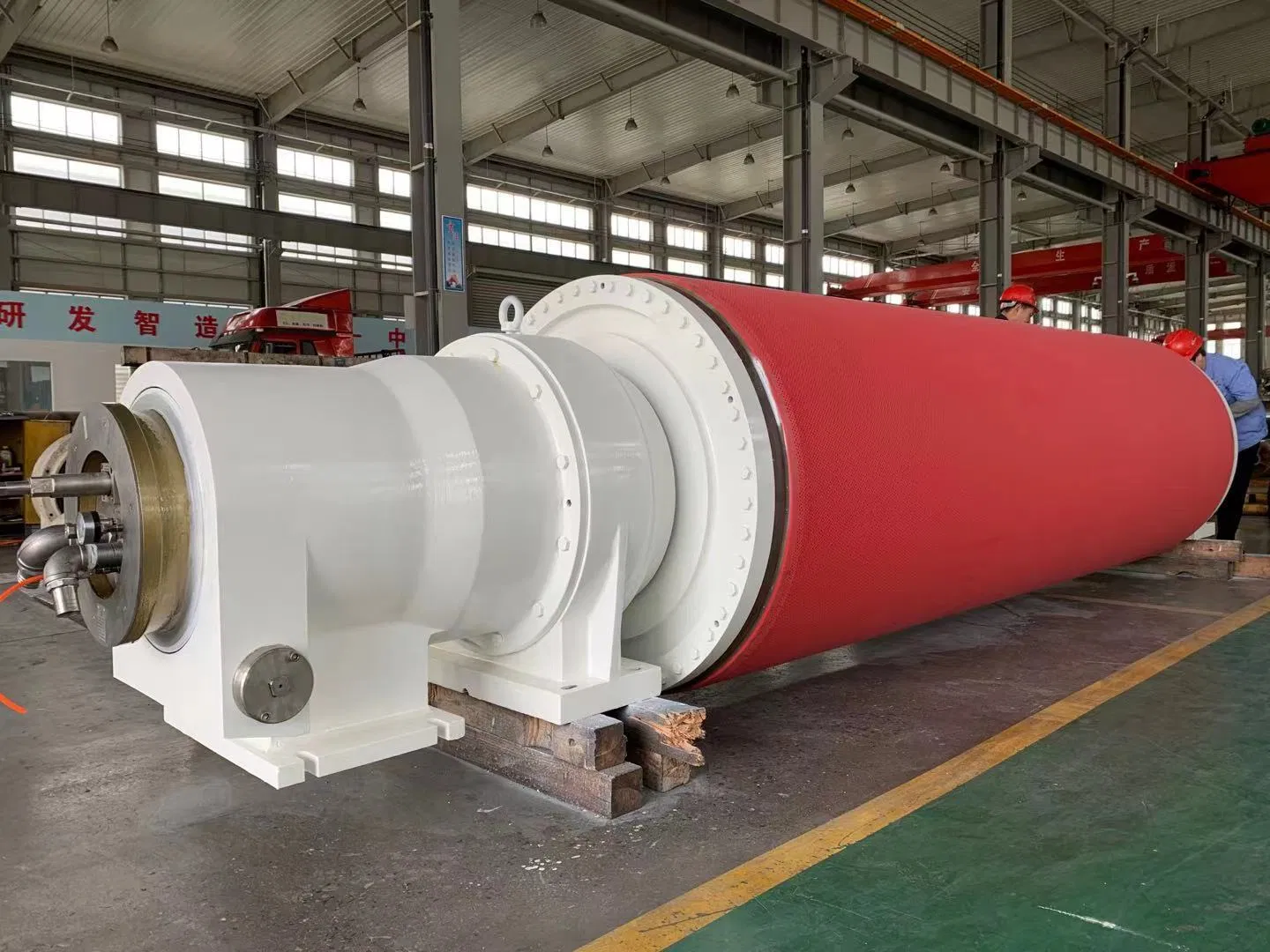In the demanding world of paper manufacturing, every second of operational uptime is precious. It's not just about keeping the machines running; it's about optimizing every component to ensure peak performance, consistent quality, and, crucially, to eliminate the specter of unscheduled downtime. At the heart of this intricate dance are paper machine rolls – often overlooked, yet undeniably critical. To be honest, many manufacturers view rolls as a commodity, but in my experience, this perspective is a significant oversight. A well-specified roll isn't just a part; it's an investment in uninterrupted production and enhanced efficiency.
This guide is designed to empower manufacturers with the knowledge to specify paper machine rolls with the precision required to not only prevent costly stoppages but also to unlock new levels of operational efficiency. We'll delve into the nuances of roll specification, transforming it from a routine procurement task into a strategic lever for competitive advantage.
The Unseen Costs of Poor Roll Specification: Why Downtime Persists
The true cost of downtime extends far beyond the immediate halt in production. When a paper machine roll fails prematurely, the ripple effect can be catastrophic. Think about it: how much does an hour of your paper machine's idle time truly cost your operation? It's not just lost output; it's labor costs for maintenance, material waste, energy consumption for restarts, and potential damage to other machine components. Interestingly enough, many experts agree that these indirect costs often dwarf the direct expenses.
The Domino Effect of Roll Failure
A single poorly specified roll can initiate a chain reaction. A roll with inadequate surface hardness might wear prematurely, leading to uneven nip pressure and compromised paper quality. This can, in turn, cause web breaks, forcing an immediate shutdown. Or perhaps a roll with improper dynamic balancing introduces vibrations that stress bearings, gears, and even the machine frame itself, leading to cascading failures and extensive repair work. These aren't isolated incidents; they're symptoms of a fundamental issue in the initial specification.
Beyond the Obvious: Hidden Efficiency Losses
Even if a roll doesn't outright fail, suboptimal specification can silently erode efficiency. Rolls that don't maintain consistent temperature profiles can impact drying efficiency, increasing energy consumption. Those with surface finishes not suited for the application can lead to sticking, doctor blade wear, or poor sheet release, all of which reduce machine speed and throughput. These are the subtle inefficiencies that, over time, accumulate into significant losses, impacting your bottom line without a dramatic "failure" event. It's worth noting that these hidden costs are often harder to quantify but are no less impactful.

Core Elements of Precision Roll Specification: A Manufacturer's Blueprint for Efficiency
Eliminating downtime and boosting efficiency begins with a meticulous approach to roll specification. This isn't a one-size-fits-all endeavor; it requires a deep understanding of the specific demands of each roll's position within the paper machine. Our company believes that a holistic approach, considering every facet of the roll's design and application, is paramount.
Material Selection and Surface Engineering
The foundation of a durable and efficient roll lies in its material. For instance, in press sections, rolls require robust cores and wear-resistant covers that can withstand immense pressure and abrasive slurries. Suction rolls demand materials that resist corrosion and fatigue cracking. Beyond the base material, the surface engineering—whether it's a specialized rubber cover, a ceramic coating, or a hard chrome plating—is critical. Each choice directly impacts friction, heat transfer, wear resistance, and release properties. Specifying the correct cover material and thickness, along with its Shore hardness and chemical resistance, is a non-negotiable step towards longevity and consistent performance.
Dimensional Accuracy and Tolerances
Precision in dimensions and tolerances is absolutely vital. A roll that is even slightly out of round, tapered, or has an inconsistent diameter along its length will lead to uneven nip pressure, poor dewatering, and ultimately, quality defects or web breaks. We emphasize the importance of specifying strict tolerances for diameter, concentricity, parallelism, and surface finish (Ra values). These parameters directly influence the roll's ability to perform its function uniformly across the entire paper web, which is essential for both paper quality and machine stability.
Dynamic Balancing and Vibration Control
At high operating speeds, even minor imbalances in a roll can generate significant vibrations. These vibrations not only degrade paper quality (e.g., barring) but also exert immense stress on bearings, shafts, and the machine frame, leading to premature wear and catastrophic failures. Specifying rolls to a high level of dynamic balance (e.g., ISO G1.0 or better for high-speed applications) is a critical step in eliminating vibration-induced downtime. This ensures smooth operation, extends the life of adjacent components, and contributes significantly to overall machine efficiency.
Strategic Specification to Eliminate Downtime: Proactive Measures
The goal isn't just to replace a failed roll; it's to specify a roll that *won't* fail prematurely. This requires a proactive, strategic approach that integrates operational insights with engineering expertise.
Understanding Operating Conditions and Load Demands
A comprehensive understanding of the roll's specific operating environment is fundamental. This includes factors like maximum operating speed, temperature ranges, chemical exposure (e.g., pH levels of stock, cleaning agents), applied loads, and the type of paper being produced. For example, a roll in a dryer section will face different thermal stresses than one in a press section. Specifying a roll without fully considering these real-world conditions is akin to driving blind. In my experience, the more detailed the operational data provided to the roll manufacturer, the better the final product will perform.
Collaboration with Roll Manufacturers: A Partnership for Success
Effective specification is rarely a solitary endeavor. Establishing a strong collaborative relationship with your roll manufacturer is invaluable. They possess specialized knowledge of materials, coatings, and design principles. Share your operational challenges, performance goals, and detailed machine data. A good manufacturer will ask probing questions and offer insights into how specific design choices can address your pain points, whether it's reducing energy consumption or extending regrind intervals. This partnership approach is, to be honest, one of the most effective ways to leverage external expertise to your internal advantage.
Incorporating Maintenance and Longevity into Design
The best rolls are not just designed for performance but also for maintainability and longevity. Consider features that facilitate easier bearing replacement, efficient cleaning, or extended intervals between regrinds. Specifying robust bearing seats, proper lubrication channels, and durable sealing arrangements can significantly reduce maintenance-related downtime. Furthermore, discussing the expected lifespan and regrind capabilities of roll covers with your supplier ensures that the roll is a long-term asset, not a recurring problem.

Boosting Operational Efficiency Through Optimized Roll Design
Beyond preventing downtime, precise roll specification is a powerful lever for enhancing overall operational efficiency. It's about getting more out of your existing assets, improving product quality, and reducing operational costs.
Enhancing Paper Quality and Runnability
The quality of the paper produced is directly influenced by the performance of the machine rolls. Rolls with superior surface finishes, consistent nip profiles, and effective dewatering capabilities contribute to a more uniform sheet, fewer defects, and better printability. For instance, a properly crowned press roll ensures even moisture removal across the web, leading to a stronger, more consistent sheet. This improved runnability means fewer web breaks, higher machine speeds, and ultimately, more saleable product. It's worth noting that even subtle improvements in roll performance can have a significant impact on final product quality and customer satisfaction.
Reducing Energy Consumption and Wear
Optimized roll specification can lead to tangible energy savings. Rolls with low friction coatings or those designed for efficient dewatering reduce the energy required for drying in subsequent sections. Furthermore, rolls with excellent wear resistance and proper dynamic balance reduce the load on drive motors and bearings, leading to lower energy consumption and extended component life. Many experts agree that the initial investment in a high-quality, precisely specified roll often pays for itself many times over through reduced energy bills and lower maintenance costs.
The ROI of Superior Specification
While a premium roll might have a higher upfront cost, the return on investment (ROI) from reduced downtime, increased production speed, improved paper quality, and lower maintenance expenses is substantial. Consider the cumulative impact of even a 1% increase in uptime or a 0.5% reduction in energy consumption over a year. These seemingly small gains, driven by superior roll specification, translate into significant financial benefits. It’s a strategic decision that positions your manufacturing operation for sustained profitability.
Implementing a Robust Roll Specification Protocol: Your Guide to Sustained Performance
To truly embed the principles of precise roll specification into your manufacturing operations, a systematic protocol is essential. This isn't a one-time fix but an ongoing commitment to excellence.
Data-Driven Assessment and Analysis
Start by gathering comprehensive data on your current roll performance. This includes historical maintenance records, failure analyses, vibration data, energy consumption figures, and quality control reports. Identify which rolls are bottlenecks, which fail prematurely, and which contribute to efficiency losses. This data-driven approach allows you to pinpoint areas where improved specification will yield the greatest benefits. For example, if a particular roll consistently requires regrinding due to uneven wear, it suggests a need to re-evaluate its material, cover, or even its operating environment.
Continuous Improvement and Feedback Loops
The process of roll specification should be dynamic, not static. Implement a feedback loop where performance data from newly specified rolls is continuously monitored and analyzed. Are the new rolls meeting the expected lifespan? Are they contributing to reduced downtime and increased efficiency? Share this feedback with your roll manufacturers to foster continuous improvement. This iterative process ensures that your specifications evolve with your operational needs and technological advancements in roll design. It's about building a culture of proactive optimization rather than reactive repair.
In conclusion, specifying paper machine rolls is far more than a technical exercise; it's a strategic imperative for any paper manufacturer aiming to eliminate downtime and boost efficiency. By focusing on material science, dimensional precision, dynamic balance, and a deep understanding of operational conditions, coupled with strong partnerships, manufacturers can transform their roll procurement into a powerful driver of productivity and profitability. The path to sustained operational excellence in paper manufacturing begins with the rolls that keep the paper flowing.
For more detailed information, please visit our official website:Paper machine rolls
About the author: Dr. Anya Sharma is a seasoned industrial engineer with over 15 years of experience specializing in optimizing manufacturing processes within the paper and pulp industry. Her expertise lies in advanced materials science, predictive maintenance, and operational efficiency, having consulted for numerous leading manufacturers worldwide. Dr. Sharma is passionate about translating complex engineering principles into actionable strategies that drive tangible improvements in uptime and productivity.


